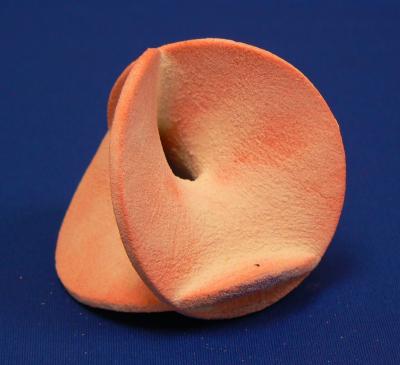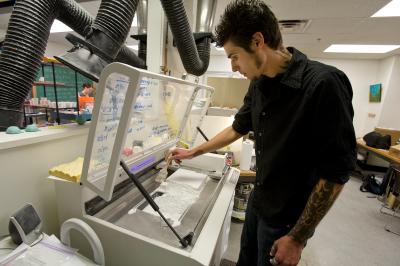A team of engineers and the art from the University of Washington has developed a way to create objects made of glass using a conventional 3D-printer. Technique allows the application of new materials with similar devices. The technology is called “vitraglyphic process”.

Three-dimensional printers are used as a cheap and easy way for prototyping. In conventional 3D-printing system, which works with the powder, a thin layer of material distributed on the platform and the software controls the inkjet printer that causes binder in the appropriate places. It interacts with the powder and binds the particles together, resulting in a three-dimensional object. However, the glass powder is bad absorb liquid, therefore used in the case of ceramic technique should be reconsidered.
“The familiar process of printing led to the output of gelatinous parts when we turned to glass powder — says Grant Marchelli. — It was necessary to modify how both the powder and binder mixture are treated. By adjusting the ratio between the two components, scientists have made a solid form with a powder from Spectrum Glass. Structure held together and melted at the required temperature.
Glass can be transparent or opaque, but stands out for its inorganic form (no carbon contained), solidifying from the molten state without the formation of molecules ordered crystalline structures. Therefore, technically the glass is rather a chilled liquid than a solid material. Printed three-dimensional glass has a striking similarity with the technique of creating glass products pate de verre (“glass paste”). There, the glass powder is mixed with binding material such as egg whites or enamel, and is placed in a form for firing. The technique originated from the times of ancient Egypt, and, thanks to new technology, is getting a new life.

As is the case with ceramics, researchers see great opportunities for three-dimensional printing of glass. “Publication of descriptions without commercial conditions, we hope, will inspire further experimentation and innovation community of arts and engineers” – describes the well intentions professor of mechanical engineering at Washington University Duane Storti.
A postgraduate of Center for Digital Arts and Experimental Media at the University Meghan Trainor pioneered the new method. “With the establishment of glass objects from digital models of my ideas are immediately translated into tangible form, which is a key factor in the knowledge of digital art – Trainor said. – Moving from idea to print in such a short period of time creates an attractive process, where glass objects are part tactile feedback.”
Associate Professor of Architecture at UCLA (University of California), Berkeley, Ronald Rael collaborated with colleagues to develop his own printer. He is engaged in a new kind of ceramic blocks, which can be used to remove moisture from the cooling systems. “3D-printing of glass has great potential in the use of glass in architecture – explains the researcher. – Until now, there was no acceptable method of rapid sample preparation of this material, which led to expensive and time-consuming process for testing models.” According to him, three-dimensional printing allows for testing different types of glass, including a recycled glass wastes.
